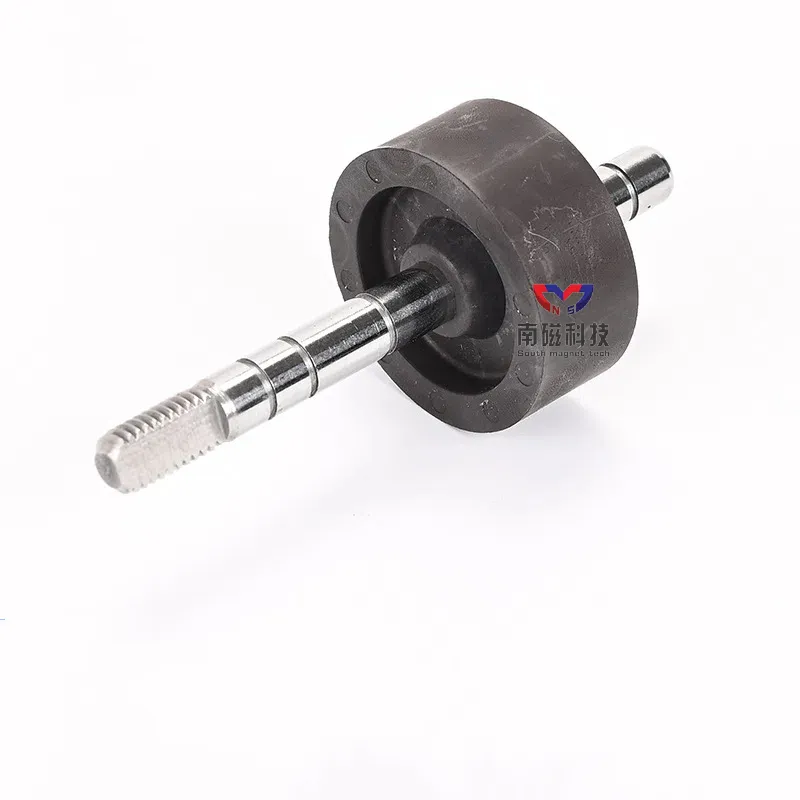Understanding the DC Motor Rotor: Design, Function, and Importance
2024-10-24
DC motors are widely used in various industries due to their simplicity, reliability, and ease of control. At the heart of every DC motor is the rotor, a crucial component that converts electrical energy into mechanical motion. In this blog, we’ll dive into what a DC motor rotor is, how it works, and why it plays such an essential role in the motor’s operation.
What is a DC Motor Rotor?
The rotor in a DC motor is the rotating part that interacts with the stator (the stationary part of the motor) to produce motion. It is typically composed of windings of copper wire around a laminated core, designed to carry electric current and create a magnetic field. The rotor's movement is generated by the interaction of its magnetic field with the magnetic field of the stator, producing torque that drives the motor's shaft.
Components of a DC Motor Rotor
A typical DC motor rotor consists of several key components that work together to ensure smooth operation:
1. Armature Windings: The rotor contains coils of wire called armature windings, through which current flows. These windings are connected to the commutator and play a key role in generating the magnetic field that interacts with the stator.
2. Core: The core, usually made of laminated iron, helps to concentrate the magnetic field created by the armature windings. It also minimizes energy losses due to eddy currents.
3. Shaft: The rotor is mounted on a shaft, which transmits the mechanical energy generated by the rotating magnetic field to the device being driven by the motor.
4. Commutator: The commutator is attached to the rotor and works with brushes to ensure that current is supplied to the armature windings. It helps to reverse the direction of current flow through the windings, allowing continuous rotation.
5. Bearings: Bearings are used to support the rotor and allow smooth rotation with minimal friction.
How the Rotor Works in a DC Motor
The operation of a DC motor rotor is based on the principle of electromagnetic induction. Here’s a step-by-step breakdown of how the rotor works:
1. Current Flow: When electric current is supplied to the motor, it flows through the brushes and commutator into the armature windings on the rotor.
2. Magnetic Interaction: As current passes through the armature windings, it creates a magnetic field around the rotor. The stator, which may contain permanent magnets or electromagnets, also generates a magnetic field.
3. Torque Generation: The interaction between the magnetic fields of the rotor and the stator produces a force (Lorentz force) that causes the rotor to rotate. The direction of the force is determined by the direction of the current and the magnetic polarity, which is controlled by the commutator.
4. Continuous Rotation: The commutator reverses the direction of the current at just the right moment to ensure that the rotor keeps spinning in the same direction, creating continuous motion.
Types of DC Motor Rotors
There are different rotor designs based on the type of DC motor:
1. Wound Rotor: In brushed DC motors, the rotor is typically wound with copper wire and connected to a commutator. This design is used in various industrial and automotive applications.
2. Permanent Magnet Rotor: In brushless DC motors, the rotor contains permanent magnets, while the stator has the windings. This design reduces wear and tear from brushes and commutators and is widely used in modern electronics, drones, and electric vehicles.
3. Ironless Rotor: Some DC motors use a rotor made without an iron core to reduce weight and inertia, improving efficiency in applications requiring quick acceleration and deceleration, such as robotics.
Benefits of DC Motor Rotors
1. High Efficiency: The design of the rotor allows for efficient energy conversion, ensuring that a maximum amount of electrical energy is converted into mechanical motion.
2. Smooth Operation: The interaction between the rotor and stator provides smooth rotation, which is critical for applications requiring precision and accuracy, such as conveyor belts and robotics.
3. Controllability: DC motors, and by extension their rotors, are easily controlled by adjusting the voltage or current supplied to the motor, making them ideal for applications where speed and torque control are required.
4. Durability: With proper maintenance, such as brush replacement in brushed DC motors, rotors can last a long time, providing reliable performance in various environments.
Applications of DC Motor Rotors

The versatility and effectiveness of DC motor rotors make them suitable for a wide range of applications, including:
- Electric vehicles: DC motors with permanent magnet rotors are widely used in electric cars and bicycles for their high efficiency and smooth torque delivery.
- Industrial machinery: DC motors with wound rotors power various industrial equipment such as conveyor belts, cranes, and elevators due to their controllability and reliability.
- Home appliances: Small DC motors are found in household devices like fans, mixers, and vacuum cleaners, where speed control is necessary.
- Robotics: DC motors with ironless rotors are used in robotics for precise control and quick response times, essential in automation and high-tech applications.
Conclusion
The rotor is the core component that drives the mechanical motion of a DC motor, converting electrical energy into rotational force. Its simple yet highly efficient design makes it indispensable in a variety of applications, from industrial machinery to electric vehicles. Understanding how the rotor works and its importance in the motor’s overall function allows for better selection and maintenance of DC motors in different systems. Whether you're working with small electronics or large industrial systems, the DC motor rotor plays a key role in ensuring smooth, controlled, and reliable operation.


